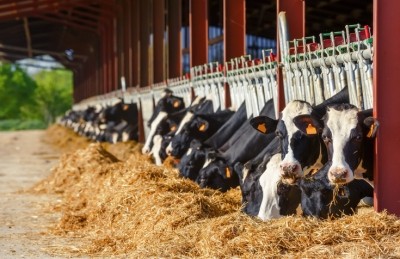60-Second Interview
‘Innovation requires internal cooperation, real internal communication and risk-taking behavior’

What is your background?
After my two MSc degrees in nutrition and molecular physiology, I did a PhD in nutrition focusing on phosphorus metabolism in dairy cows. I started working for French premix company INZO, which was part of Neovia, the company previously known as InVivo NSA. I spent eight years as R&D leader, first in ruminants, and then in poultry species; the role eventually progressed into R&D manager. After those eight years, I was ready for new challenges; I also wanted to be closer to sales and marketing people. The proposal made by Pancosma was to create an R&D department in the company and also to imagine a strategy and deploy it. I never regretted this change. Today, I am in charge of R&D but also innovation. My interpretation of innovation is multifaceted - it is about technology, process, organization, and management. Management need to create a culture that nurtures innovation throughout the company. Innovation requires internal cooperation, real internal communication and risk-taking behavior.
What do you enjoy most about working in feed additive R&D?
I have a passion for animal nutrition and animal production, along with a drive to connect science and customers’ requirements.
Ensuring global food security is one of the most critical and noble challenges currently facing us today. In this age of technology, instant gratification, and the expectation of easily available food, people have forgotten that food security is the very foundation of human civilization. As food sources become limited, serious global and regional tensions are sure to develop. Not surprisingly, a revolution based on major innovations in this field is called for but is a difficult undertaking. Firstly, the challenge itself is complex due to escalating consumer expectations. Secondly, the business environment is also complex due to the traditional linear chain of the feed industry.
I love working in feed additive R&D as I consider feed additives concentrated forms of science and technology – in other sectors, such products would be termed microprocessors. Every minute of working in this field, interacting with customers and the scientific ecosystem is rewarding. We, as feed additive producers, are part of a long chain that ends with feeding the world safe food from animal origin; it is an invigorating sector to work in.
What is the hardest thing about your job?
I find the doubt that is characteristic of scientists can sometimes be difficult to handle.
A significant part of my job is the interface or interactions with customers, because this is what R&D is all about and because this is where innovation comes to life. In this context, the hardest part of my job is also the most rewarding - continuously bringing a high level of value to our customers. Their companies are always evolving and their challenges are becoming more and more complex. It is extremely important to develop new concepts that are relevant, effective, and economical. Arriving at this point can often be very difficult but once there, it is the most rewarding part of my job.
Is there such thing as a typical day in your role? If so, what does it look like?
My role consists of a lot of mentoring and coaching of people that are either directly reporting to me or those that are in other departments, so a significant part of my day is taken up by discussions. A typical day will also have moments of writing as well as interactions with scientists, customers and my peers in the company.
If you could have one 'do-over' in your career, what would that be?
Nothing. I have made mistakes but I have always learned a lot from them, despite difficult moments.
















